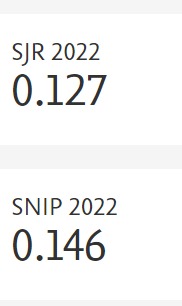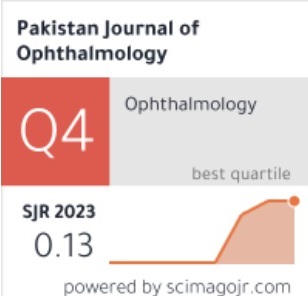Visual Outcome of Ocular Trauma Presenting in a Tertiary Care Hospital in Sahiwal
Doi: 10.36351/pjo.v36i2.987
DOI:
https://doi.org/10.36351/pjo.v36i2.987Keywords:
Blindness. Ocular trauma. Visual Acuity, contusion.Abstract
Purpose: To find the visual outcome of ocular trauma presenting in a tertiary care hospital in Sahiwal.
Study Design: Descriptive observational study.
Place and Duration of Study: This study was conducted at District Headquarter Teaching Hospital affiliated with Sahiwal Medical College, Sahiwal from January 2016 to June 2019.
Material and Methods: Four hundred and thirty five patients were included in the study by convenient sampling technique. Patient’s age, gender, occupation, activity at the time of injury, nature of object causing trauma, duration of trauma, visual acuity at the time when patient reported to hospital, the time delay before coming to the hospital were recorded. Ocular injuries were classified according to Birmingham ocular trauma terminology. Detailed ocular examination was performed. Patients were managed and post-management visual acuity at three months was recorded.
Results: Mean age of patients was 29.07 ± 12.53 years. There were 219 (50.3%) closed globe and 216 (49.7%) open globe injuries. In 59 (13.6%) cases, cause of injury was metal object. In 146 (33.6%) cases injury was classified as contusion. In 164 (37.7%) cases cornea was involved. Majority of the patients were male. Eighty-seven patients presented within 1 day after trauma. In 154 (35.4%) patients, visual acuity at the time of presentation was 6/12 or better while in 171 (39.3%) cases it was less than 6/60. Chi-square test was used to calculate the difference between pre and post-management visual acuity. This difference was statistically significant with p-value less than 0.05
Conclusion: Ocular trauma cases, if properly and timely managed, have a statistically significant increase in visual acuity.






